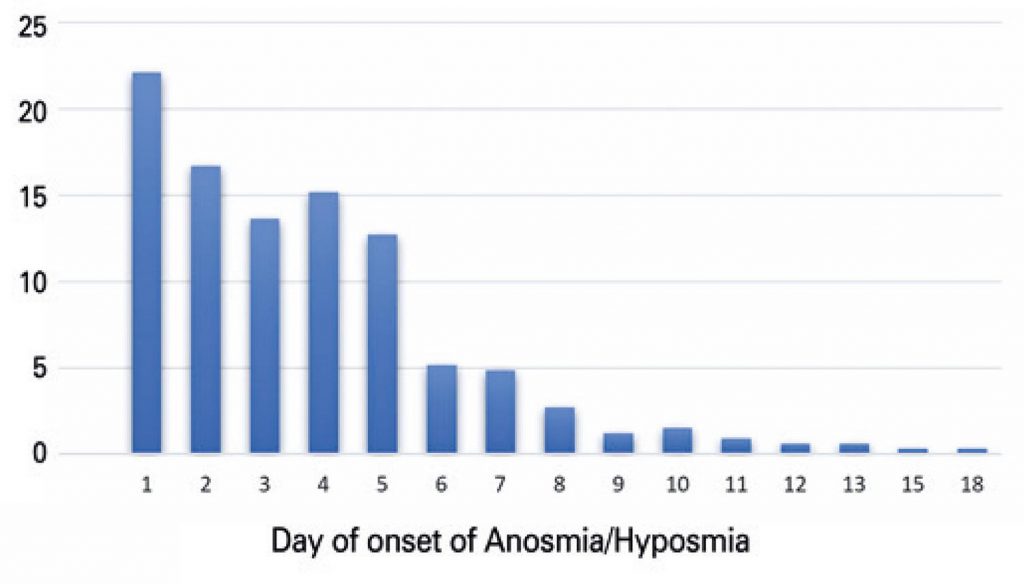einstein (São Paulo). 30/Sep/2021;19:eAO6204.
Olfactory dysfunction in the scenario of COVID-19 pandemic in patients screened by the telemonitoring
DOI: 10.31744/einstein_journal/2021AO6204
ABSTRACT
Objective
To assess the clinical and epidemiological profile of patients with olfactory dysfunction in the scenario of COVID-19 pandemic.
Methods
The study selected patients with loss of smell, previously screened by telemonitoring system of the Municipal Health Department of Goiânia (GO), Brazil, who agreed to answer a questionnaire about COVID-19 symptoms and findings of exams. The interviews were conducted by six otolaryngologists, who applied the specific questionnaire, over the phone.
Results
A total of 13,910 patients underwent telemonitoring, and 627 (4.51%) had olfactory loss complaints. Out of them, 330 were included in the survey. We observed a higher prevalence of altered smell in women (67%), and in patients aged under 50 years (86%). In most cases the manifestations had a sudden onset (70%), and in the first 5 days of illness (80%). The most prevalent associated symptom was a change in taste (89%), and only 2.7% of interviewed patients required hospitalization.
Conclusion
Anosmia in COVID-19 is more prevalent in females and individuals aged under 50 years. It is a relevant initial symptom predictive of the disease, together with dysgeusia.
491

